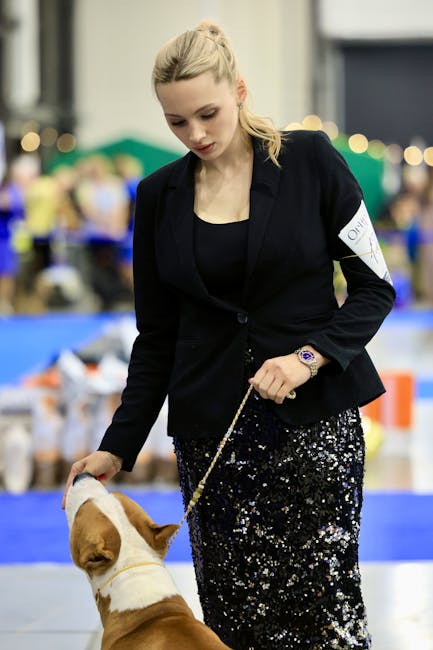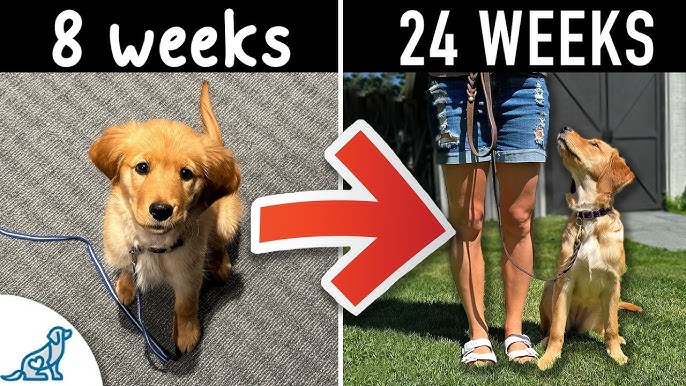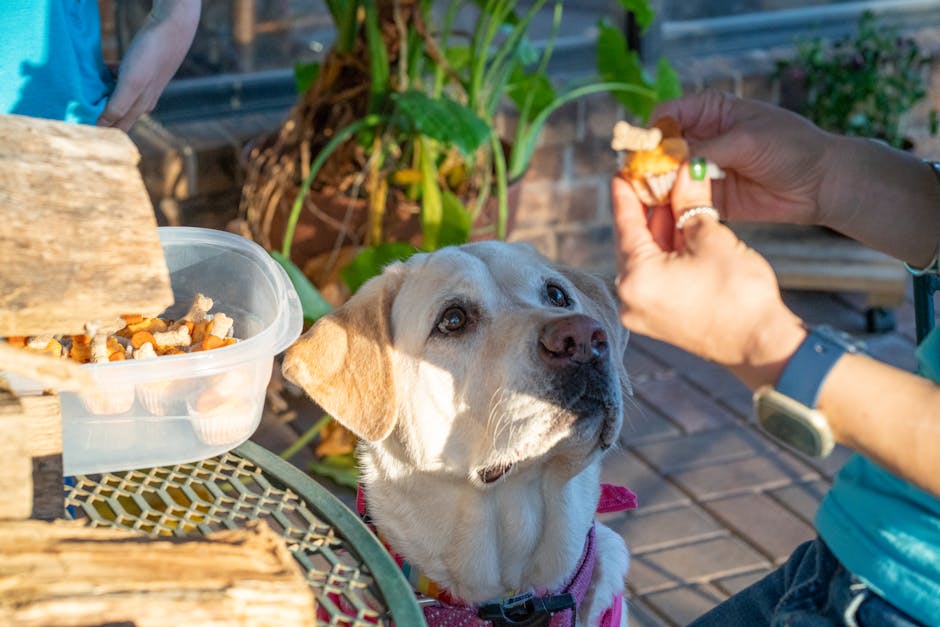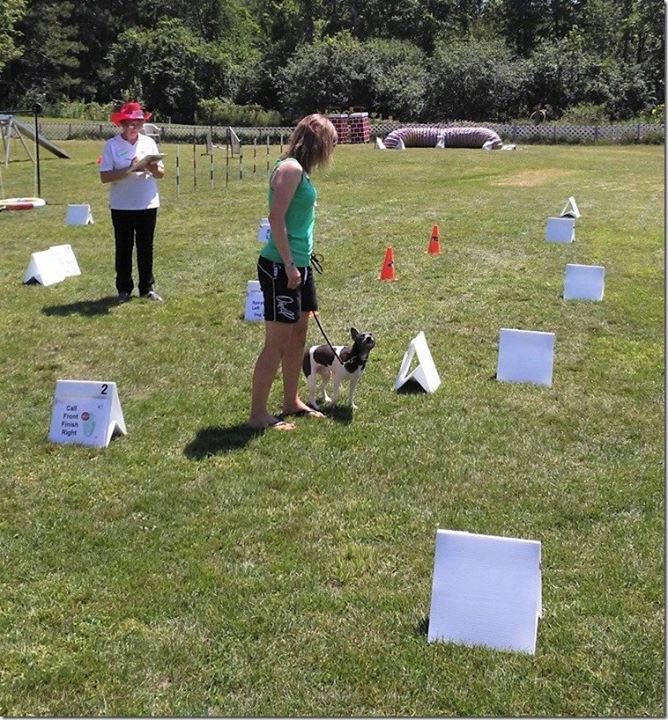Are you looking for a fun and engaging way to train your dog? Rally Obedience Dog Training might be exactly what you need.
It’s more than just commands and rules—it’s a dynamic way to build a stronger bond with your furry friend. Imagine guiding your dog through a course filled with different challenges, where both of you work as a team. Curious to know how this training works and why it’s becoming so popular?
Keep reading, and you’ll discover everything you need to get started with Rally Obedience.
Rally Obedience Essentials
Rally Obedience Essentials lay the foundation for a successful and enjoyable training experience with your dog. Understanding these basics helps you and your dog communicate clearly and work as a team. It’s not just about following commands; it’s about building a positive connection through structured exercises.
Key Principles
Rally Obedience focuses on teamwork and clear communication between you and your dog. Each exercise is designed to improve your dog’s attention and responsiveness while keeping the experience fun.
Consistency matters. Using the same cues and rewarding good behavior immediately helps your dog understand what you expect. Patience is equally important—dogs learn at their own pace, and pushing too hard can cause frustration for both of you.
Think about how you react when learning something new. Would you perform better with encouragement or criticism? Your dog feels the same way.
Basic Commands
The core of Rally Obedience revolves around mastering simple commands that guide your dog through a course. Start with essential commands like sit, stay, heel, and come. These basics create a strong foundation for more complex exercises.
Practice these commands in short, frequent sessions to keep your dog engaged. Use clear, consistent words and hand signals to avoid confusion. Remember, every dog learns differently—what works for one might need adjustment for another.
Have you noticed how your dog responds better to certain words or gestures? Use that knowledge to customize your training approach. This personal touch can make all the difference in progress and enjoyment.

Credit: www.mccanndogs.com
Benefits Of Rally Obedience
Rally obedience offers many benefits for both dogs and their owners. It combines fun, training, and exercise in one activity. This training style helps dogs stay active and sharp. It also strengthens the connection between dogs and their humans. Here are some key benefits of rally obedience.
Physical Exercise
Rally obedience gives dogs regular physical activity. It involves walking, running, and quick movements. This helps dogs maintain a healthy weight and good muscle tone. Exercise also improves overall health and energy levels. Dogs enjoy moving and playing in a structured way.
Mental Stimulation
Rally obedience challenges a dog’s mind. Dogs learn new commands and follow signs on a course. This requires focus and problem-solving skills. Mental exercise helps prevent boredom and reduces bad behavior. It keeps dogs alert and confident in different situations.
Bonding With Your Dog
Training together builds trust and understanding. Rally obedience encourages teamwork between dogs and owners. It creates positive experiences and shared goals. This strengthens the emotional bond and improves communication. Both dogs and owners feel happier and more connected.
Getting Started With Rally Obedience
Starting rally obedience training is an exciting journey for both you and your dog. It combines fun, learning, and teamwork. This sport helps improve your dog’s focus and obedience through a series of stations with specific commands. Preparing well from the start sets a strong foundation.
Choosing The Right Dog
Any dog can try rally obedience, but some breeds excel naturally. Look for a dog with good energy, eagerness to learn, and a friendly attitude. Small or large breeds both do well, depending on your lifestyle. The key is patience and consistency in training.
Essential Equipment
Gather basic gear before training begins. You will need:
- A comfortable collar or harness
- A sturdy leash, around 6 feet long
- Small, tasty treats for rewards
- A clicker, if you use clicker training
- Printed or digital rally obedience signs
Keep treats small to avoid distractions and overeating. Equipment should feel comfortable for your dog.
Setting Up A Training Space
Choose a quiet, flat area free from distractions. Grass or smooth floors work well. Mark a course with cones or tape for practice. Keep the space safe and clear to avoid injuries.
Start with short sessions to keep your dog focused. Gradually increase the difficulty as skills improve. A calm environment helps your dog learn faster.
Training Techniques
Training techniques in Rally Obedience dog training focus on clear communication and building a strong bond between you and your dog. The process is designed to be enjoyable and rewarding, encouraging your dog to perform commands confidently. Understanding these techniques helps you create a training routine that suits your dog’s personality and learning style.
Positive Reinforcement
Positive reinforcement is the backbone of Rally Obedience training. It means rewarding your dog immediately when they follow a command correctly. Rewards can be treats, praise, or playtime—anything your dog values.
This approach encourages your dog to repeat good behavior because they associate it with something pleasant. Have you noticed how your dog’s tail wags a little faster when you use their favorite treat? That’s the power of positive reinforcement working in real time.
Building Confidence
Confidence is key for your dog to perform well in Rally Obedience. Start with simple commands and gradually increase the difficulty. Celebrate small victories to keep your dog motivated and less anxious.
Dogs that feel confident are more willing to try new tasks and stay focused during training. If your dog hesitates, slow down and offer extra encouragement. What small step can you take today to boost your dog’s confidence?
Overcoming Challenges
Every dog faces challenges during training, whether it’s distractions, stubbornness, or fear. The trick is to identify what’s holding your dog back and work around it patiently. Break down difficult commands into smaller parts to avoid overwhelming your dog.
Consistency and patience help you and your dog move past setbacks. When you encounter a stumbling block, ask yourself what you can change in your approach to make learning easier for your dog. Remember, every challenge is an opportunity to deepen your connection.
Creating A Routine
Creating a routine is a key part of rally obedience dog training. It helps both you and your dog build consistency and confidence. Without a steady routine, progress can feel slow and frustrating.
Daily Practice
Set aside a specific time each day for rally obedience practice. Even 10 to 15 minutes can make a big difference. Short, focused sessions keep your dog engaged and prevent burnout.
Try to practice in different locations around your home or yard. This variety helps your dog learn to focus despite distractions. Have you noticed how your dog reacts when the environment changes?
Tracking Progress
Keep a simple journal or use an app to note what commands your dog masters and where they struggle. Write down what worked well and what didn’t during each session. This helps you see real improvements over time.
Tracking progress allows you to celebrate small wins, which keeps motivation high. What improvements have surprised you the most so far?
Adjusting Strategies
Use your notes to change up your training techniques if something isn’t working. Maybe your dog responds better to treats than praise, or vice versa. Be open to experimenting with different rewards and commands.
Remember, a routine isn’t about rigidity; it’s about finding what fits your dog’s unique learning style. How will you tweak your approach next week based on your observations?

Credit: goldenpawsdogtraining.com
Participating In Competitions
Participating in Rally Obedience competitions offers a unique chance to showcase the bond between you and your dog. It’s not just about winning; it’s about testing your teamwork under pressure and learning from every run. These events can be thrilling and educational, helping you both grow in confidence and skill.
Preparing For Events
Preparation starts weeks before the competition. Regular practice on the specific course signs and commands is crucial. Try simulating event conditions by practicing in different environments to help your dog stay focused despite distractions.
Gather all necessary gear ahead of time, including your dog’s leash, treats, and any required paperwork. Don’t forget to check the event schedule and location details to avoid last-minute stress. Have you ever noticed how a calm, well-prepared approach can set the tone for a successful day?
Rules And Regulations
Every Rally Obedience competition follows a structured set of rules. These cover the types of exercises, scoring methods, and penalties for mistakes. Understanding these rules helps you avoid surprises and plan your training to meet the standards.
Most events require your dog to perform a series of stations in a specific order, each with clear instructions. Judges look for accuracy, smooth transitions, and teamwork. Reading the official rulebook and attending a briefing session can give you a competitive edge.
Tips For Success
- Stay calm and positive:Dogs pick up on your energy, so your attitude influences their performance.
- Focus on clear communication:Use consistent commands and body language to guide your dog confidently.
- Practice handling skills:Quick, smooth movements between stations save valuable time.
- Learn from each run:Review your performance and make small adjustments for improvement.
- Enjoy the experience:Remember, each competition builds your partnership and skills.
Have you considered how celebrating small victories during training and events can boost your motivation? Embrace the process and keep your eyes on the shared journey with your dog.
Common Mistakes To Avoid
Rally obedience training can be a rewarding experience for both you and your dog, but it requires focus and consistency. Many trainers, especially beginners, stumble over common pitfalls that can slow progress or cause confusion for the dog. Recognizing these mistakes early helps you create a more positive and effective training environment.
Inconsistent Training
Consistency is key in rally obedience. If your cues or rewards vary, your dog may become unsure about what you want. For instance, giving a treat sometimes but ignoring good behavior other times leaves your dog guessing.
Try to keep commands and rewards uniform. Training sessions should follow a clear routine so your dog can anticipate what’s coming next. This builds confidence and speeds up learning.
Ignoring Signals
Your dog communicates constantly through body language and behavior. Missing these signals can lead to frustration or anxiety during training. If your dog seems distracted or hesitant, pause and check what might be causing it.
Pay attention to signs like tail position, ear movement, and eye contact. Responding to these signals shows your dog you understand and can adjust the training pace. Have you noticed your dog’s subtle cues before a mistake happens?
Pushing Too Hard
It’s tempting to push your dog to perfect each exercise quickly, but too much pressure can backfire. Overloading your dog with long sessions or complex commands may cause stress and resistance.
Break tasks into smaller steps and celebrate small wins. Short, fun sessions help maintain your dog’s enthusiasm. Remember, progress is better than perfection on any given day.
Advanced Rally Obedience Skills
Advanced Rally Obedience skills push both you and your dog beyond the basics. These skills demand sharper focus, quicker reactions, and deeper communication. As you refine these abilities, you’ll notice how your teamwork strengthens and your dog’s confidence soars.
Complex Commands
Complex commands combine multiple actions into one smooth sequence. Instead of simple “sit” or “stay,” your dog might need to “heel,” then “spin,” and “sit” on cue. Practicing these helps your dog think ahead and understand multi-step instructions.
Try breaking down each command into parts, then gradually link them together. This approach builds your dog’s ability to respond quickly without hesitation. Have you noticed how some dogs seem to anticipate your next move? That’s the power of mastering complex commands.
Problem-solving Drills
Problem-solving drills challenge your dog to think independently during training. You might set up obstacles or change the course layout to keep your dog guessing. These drills teach adaptability and boost your dog’s confidence in new situations.
One effective drill is using hidden treats or toys to encourage your dog to find the right path. This stimulates their mind and rewards their effort, making training fun and engaging. How often do you give your dog a chance to solve problems on their own?
Enhancing Performance
Enhancing performance is about fine-tuning the details that make your routine shine. Focus on your dog’s posture, timing, and energy level during each move. These small improvements can turn a good run into a great one.
- Use consistent signals to avoid confusion.
- Practice regularly but keep sessions short to maintain enthusiasm.
- Celebrate small wins to motivate your dog.
Remember, your attitude affects your dog’s performance. Stay calm and positive, even when things get tricky. What small change can you make today to boost your training session?
Resources And Support
Rally obedience training needs good resources and support to help both dogs and owners. Having access to the right trainers, communities, and books makes the learning process easier. These tools guide you through the steps and keep motivation high. Support helps solve problems and improve skills faster.
Finding Trainers
Trainers teach the rules and techniques of rally obedience. Choose trainers with experience in this specific sport. Many offer classes in person or online. Look for trainers who use kind and clear methods. A good trainer can spot and fix mistakes early.
Online Communities
Online groups connect dog owners who share rally obedience tips. Forums and social media pages offer advice and encouragement. Members share success stories, training videos, and answers to questions. These communities create a friendly space to learn and grow together.
Books And Guides
Books explain rally obedience step-by-step. They provide detailed instructions and useful tips. Choose guides with clear photos and simple language. Books are great for learning at your own pace. Keep a few handy for quick reference during training sessions.

Credit: www.instagram.com
Frequently Asked Questions
What Is Rally Obedience Dog Training?
Rally obedience is a dog sport combining obedience and agility. Dogs follow a course with signs showing different exercises. It focuses on teamwork, communication, and fun between the dog and handler.
How Does Rally Obedience Differ From Traditional Obedience?
Unlike traditional obedience, rally obedience is more relaxed and interactive. Handlers can encourage their dogs during the course. It emphasizes teamwork and positive reinforcement rather than strict precision.
What Skills Do Dogs Learn In Rally Obedience?
Dogs learn to follow commands like sit, stay, and heel. They also practice turns, changes in pace, and focus on their handler. The training builds discipline, confidence, and responsiveness.
Who Can Participate In Rally Obedience Training?
Rally obedience is suitable for all dog breeds and skill levels. Beginners and experienced dogs can join. It’s a great way to improve obedience and strengthen the bond between dog and owner.
Conclusion
Rally obedience dog training helps build strong bonds with your dog. It teaches clear communication and fun skills together. Dogs enjoy learning at their own pace and feel confident. Trainers guide owners step-by-step through each exercise. This training suits many dogs and owners, no matter their experience.
It keeps dogs active, focused, and happy. Try rally obedience to strengthen your relationship and enjoy training time. Simple, clear commands make learning easier for every dog. A great way to train and have fun at once.







